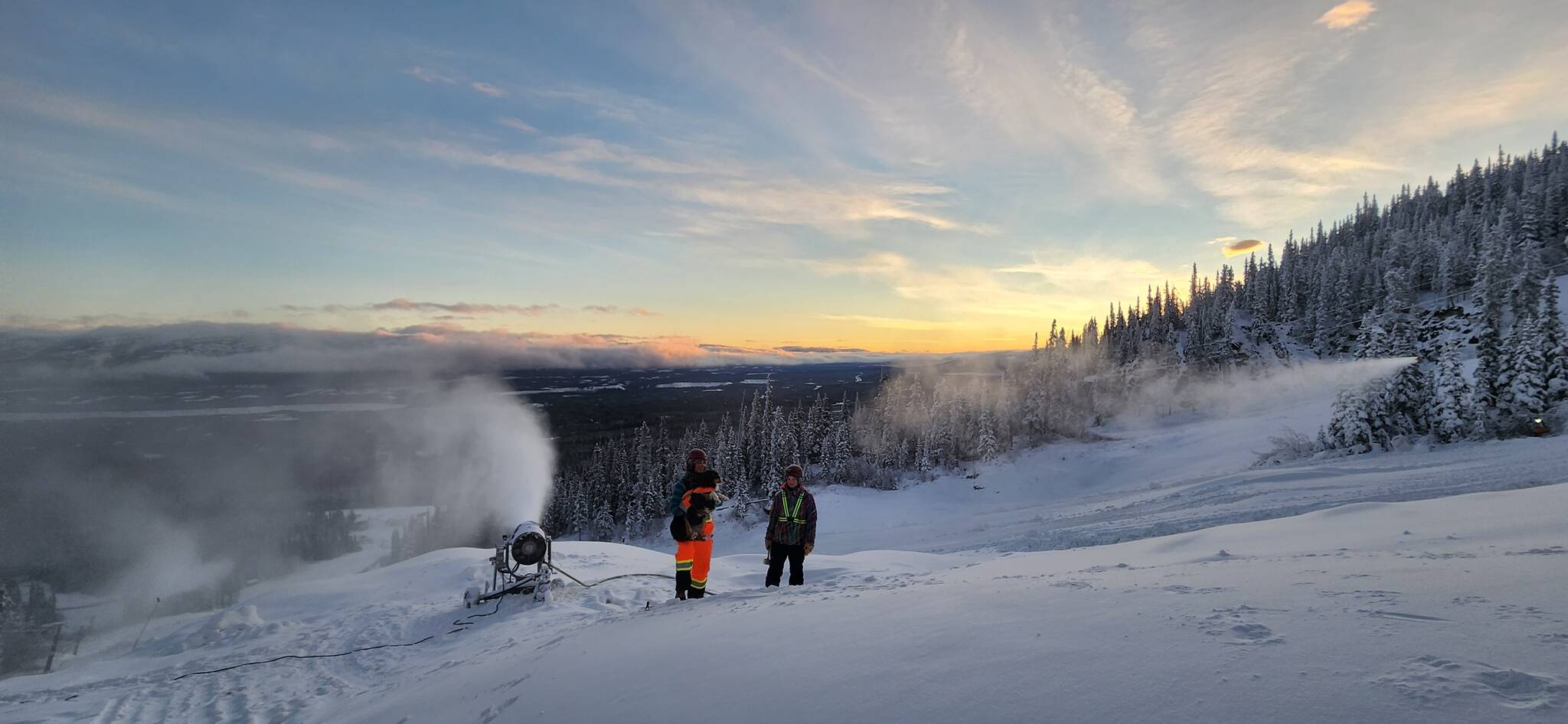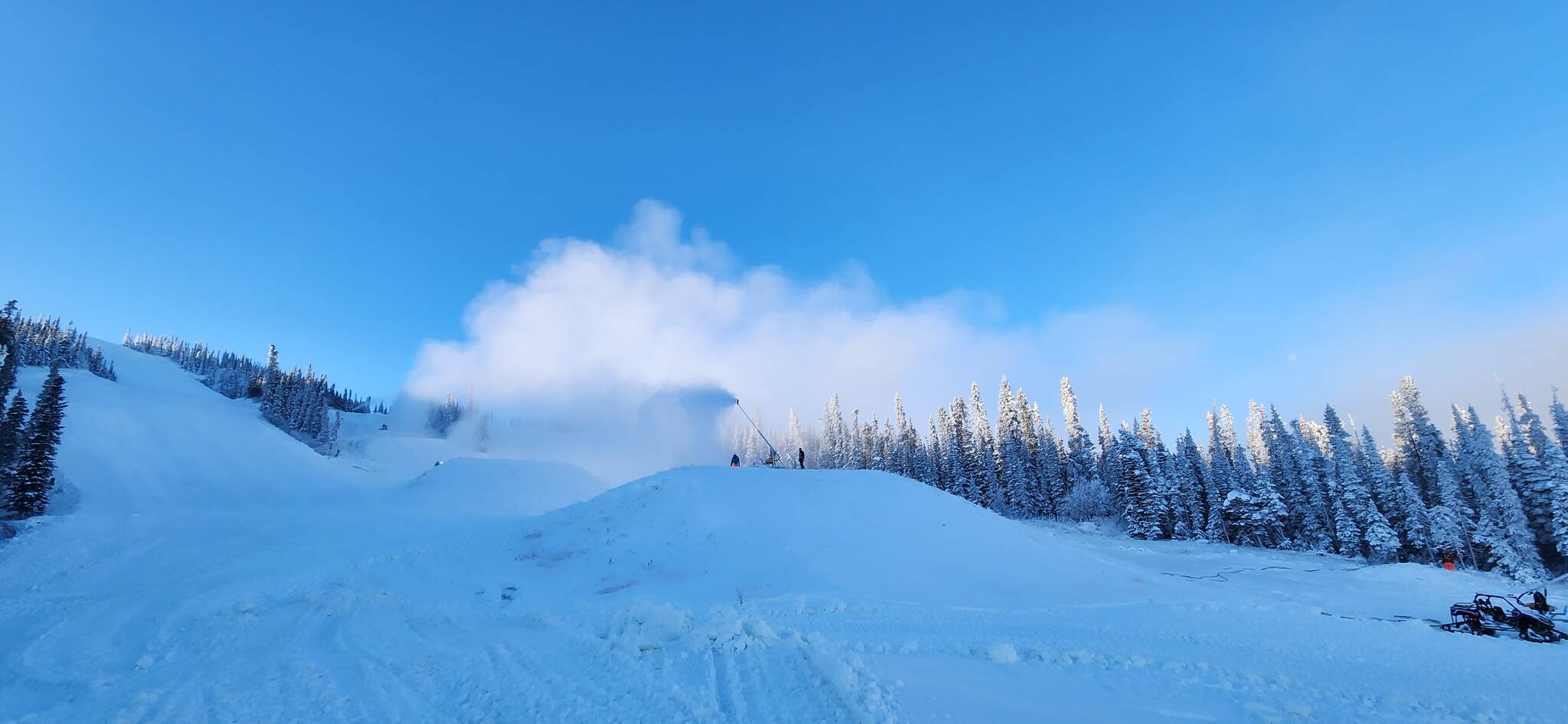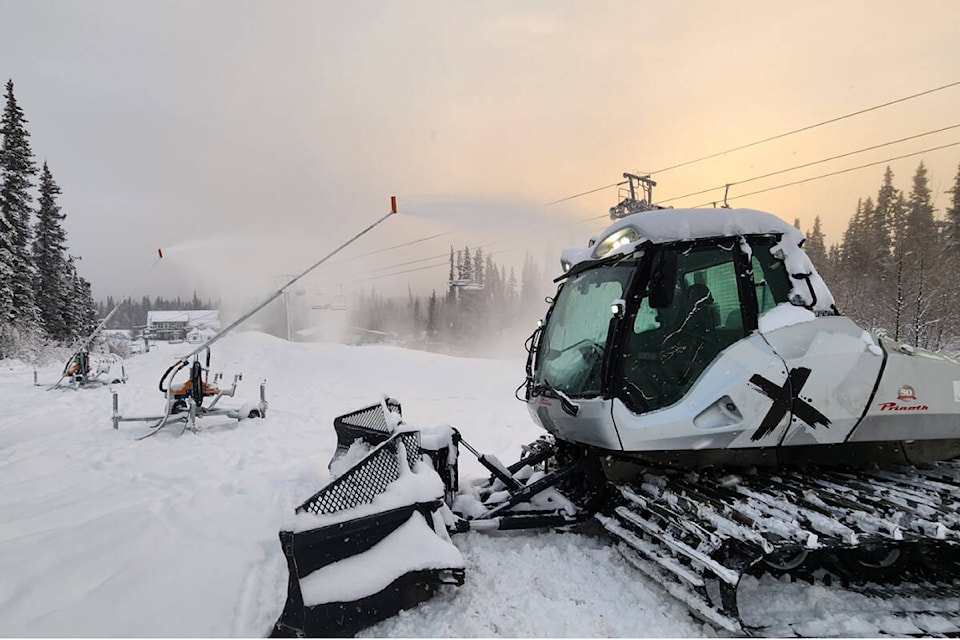Haley Ritchie
Special to the News
It was a both a white Christmas at Mt. Sima and a “green” Christmas thanks to a newly renovated system that connected the hill’s snowmaking process to the energy grid for the first time.
Every year the ski hill generates an early season base of snow in order to host winter sports, including training events that welcome international athletes to Whitehorse.
But for the past few years general manager Sam Oettli and his staff have had mixed feelings about the arduous art of covering the non-profit hill in snow.
“There were a lot of us that just didn’t want to continue doing snowmaking here the way it was,” explained Oettli.
That reluctance came from the fact that it took around 50,000 litres of diesel fuel to prepare the hill for winter sports every year.
For those who love the outdoors – particularly getting outside in winter – climate change is quickly becoming top of mind as the season becomes shorter in many places due to changing weather patterns.
“I’m an enviromentalist at heart,” said Oettli. “There’s the atmospheric issue of putting all [those emissions] into the sky, but there was also the immediate spill potential of having massive tanks of fuel everywhere.”
“The system was built in a different time when not as many people were thinking about the environmental costs. Diesel also costs 20 cents a litre at the time.”

All the components of snowmaking – heavy equipment that draws water and transports it at high pressure to the top of the hill and generators that run snow guns – relied on diesel to move the water and make the snow.
Until this year.
A massive project to connect the snowmaking system to Whitehorse’s energy grid was completed in time for the 2022 season, meaning that Mt. Sima will be able to cut carbon dioxide emissions by an estimated 95 tonnes.
Funding for the project was announced in 2020, including $3.7 million from the federal government and $1.4 million from the Yukon government, but it took around seven years total of planning to come to fruition, said Oettli.
Aside from being electrified, the snowmaking process remains very similar to before.
The system that generates snow at Mt. Sima starts at the base of the mountain, at a pumphouse down the road from the lodge where water is drawn for the facility. A high pressure system pushes the water hundreds of metres up to hydrants where it can be accessed further up slope.
In nature, snow forms when small ice crystals in clouds stick together around a tiny speck of dust – the nucleus. The process is similar with artificial snow, with a few small changes for efficiency.
In a snow gun, water is mixed with a commercial product that provides the microscopic nuclei for the artificial flakes. Compressed air splits the water into tiny droplets and launches the droplets out of the machine and high into the air. As the droplets freeze, they land on the ground as snowflakes.

Snowmaking season at Sima normally begins in early October. Oettli and operations manager Johnny Lindsay need to hire a staff team of around 14 people to oversee snow operations, which run in three shifts for 24 hours at the peak of snowmaking.
“We have crews that go and set up all the implements on the mountain and we have a couple implements that stay in one spot at all times but just need to be connected to power and water. Then we wait for the weather to be right,” he said.
The process is often a race to find staff and weather windows in time to open the hill to early season events. Snowmaking begins when temperatures are just below zero and humidity is low.
When the temperature is right, work accelerates quickly.
“The crews show up and send water up the mountain to get it going. We try to run for at least 12 hours minimum at a time in the early season, just to make sure it’s worth the cost of starting up and shutting down. Once the temperatures hold, we run 24 hours,” said Oettli.
Teams take on a day shift, evening shift and overnight shift. Groomers are also out daily helping push snow around the mountain as it’s being made.
“It’s a big crew, and very busy, are always moving,” said Oettli.
Work continues until an appropriate base covers the surface of key runs. That can involve moving up to four million litres of water each season.
Once a base is established, artificial snowmaking ceases and mother nature takes over for the rest of the season.
This year snowmaking finished on Dec. 12 – marking the beginning of a new chapter that will generate less guilt for the snowmaking team and anyone else enjoying the slopes this winter.
